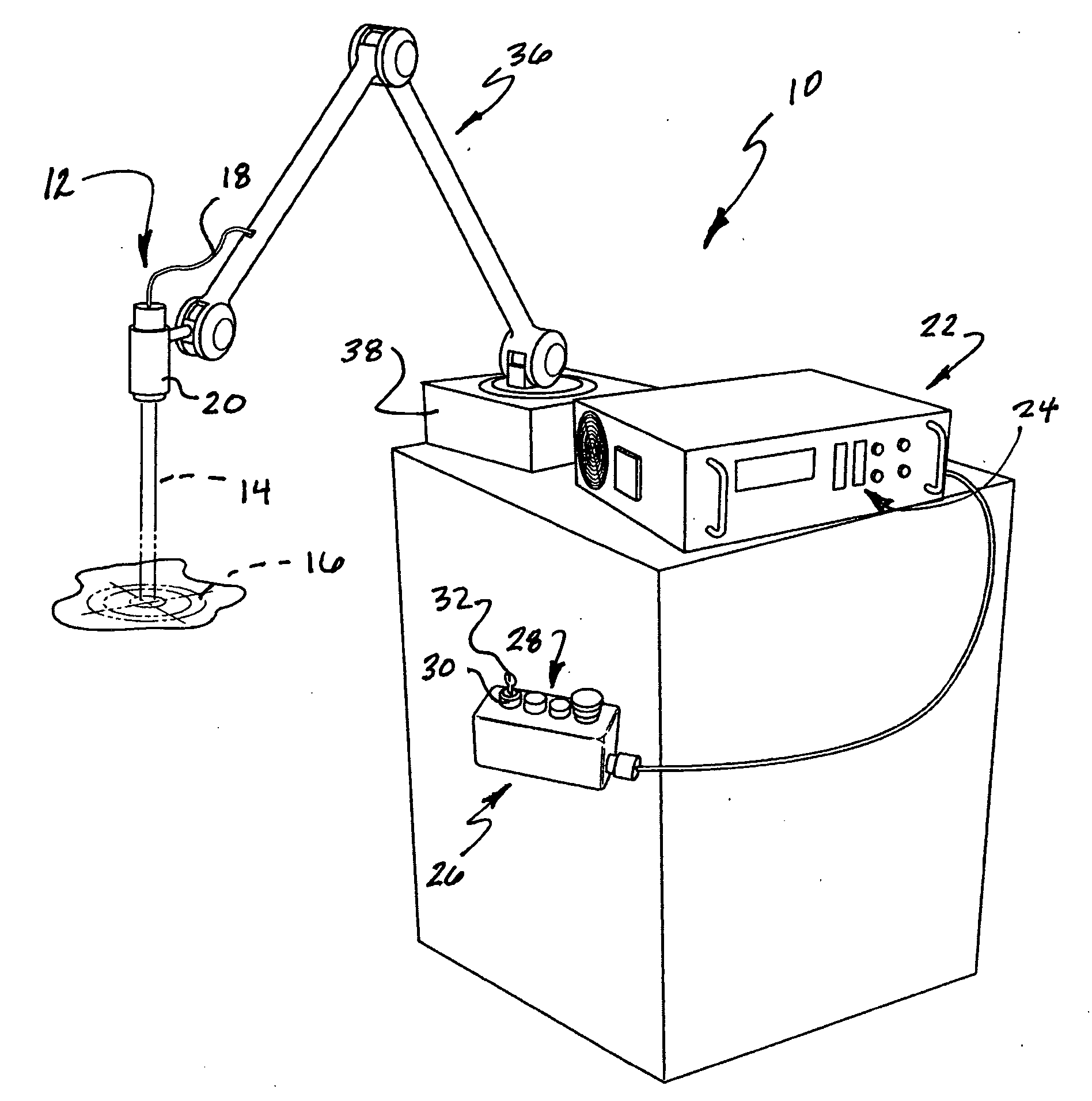Therapeutic laser treatment
- Summary
- Abstract
- Description
- Claims
- Application Information
AI Technical Summary
Benefits of technology
Problems solved by technology
Method used
Image
Examples
example 1
[0048] A 50 year old male presented with a 2-year history of severe pain in feet. He had previously been treated by multiple physicians and podiatric physicians with multiple modality treatment regimens, all without relief of symptoms. These symptoms were primarily pain at night and on early rising. Despite those treatments, the patient, who was on his feet all day as a freight delivery person, was in constant pain. He presented for treatment by referral and was given a total of approximately ten minutes of treatment with a laser over the soles of his feet. After a second treatment of approximately five minutes, the patient was pain-free. He has remained in that state to date without further treatments, and has continued his normal work schedule.
example 2
[0049] The patient presented with chronic neck pain and unable to raise his hands above 90 degrees in the lateral plane without significant pain. He had been to numerous clinics in the past, including pain clinics, chiropractors, etc. without relief. A physical examination revealed bilateral tenderness in both subscapular areas, as well as moderate swelling of the soft tissues. The treatment with a laser included the patient receiving 2 treatments bilaterally along the subscapular region, with total treatment time being approximately 20 minutes in length. There was a five day separation in treatment protocols. The results were that after the third treatment day, there was a 90% reduction in pain with motion, and after the tenth treatment day of treatment, the patient stated he was free of pain and had no movement restrictions.
example 3
[0050] The patient was presumed to have chronic arthritic pain, as no neurological symptoms were present, and an MRI showed no disc disease. The patient had less than 30 degrees of rotation to the left and 45 degrees to the right. The patient received 10 treatments of approximately 20 minutes each to the cervical areas three through seven. At the end of the treatment, the patient had 80 degrees of rotation bilaterally.
PUM
 Login to View More
Login to View More Abstract
Description
Claims
Application Information
 Login to View More
Login to View More - R&D
- Intellectual Property
- Life Sciences
- Materials
- Tech Scout
- Unparalleled Data Quality
- Higher Quality Content
- 60% Fewer Hallucinations
Browse by: Latest US Patents, China's latest patents, Technical Efficacy Thesaurus, Application Domain, Technology Topic, Popular Technical Reports.
© 2025 PatSnap. All rights reserved.Legal|Privacy policy|Modern Slavery Act Transparency Statement|Sitemap|About US| Contact US: help@patsnap.com


